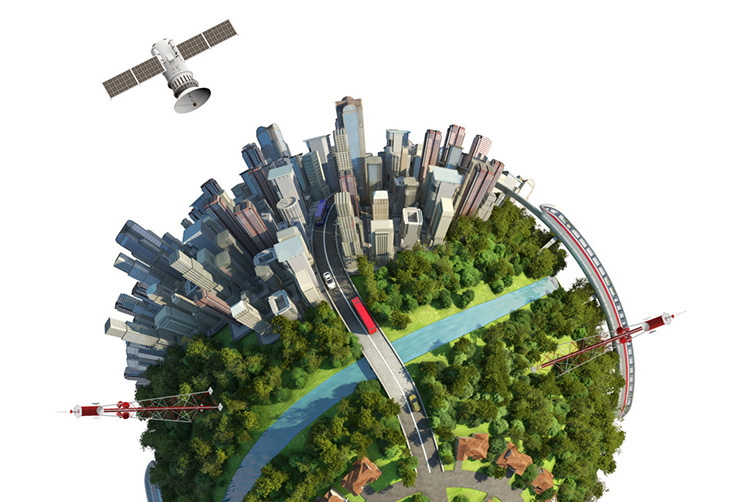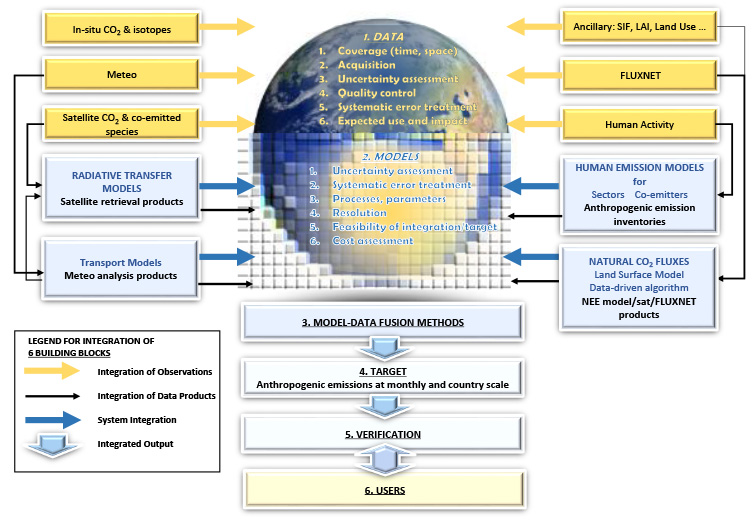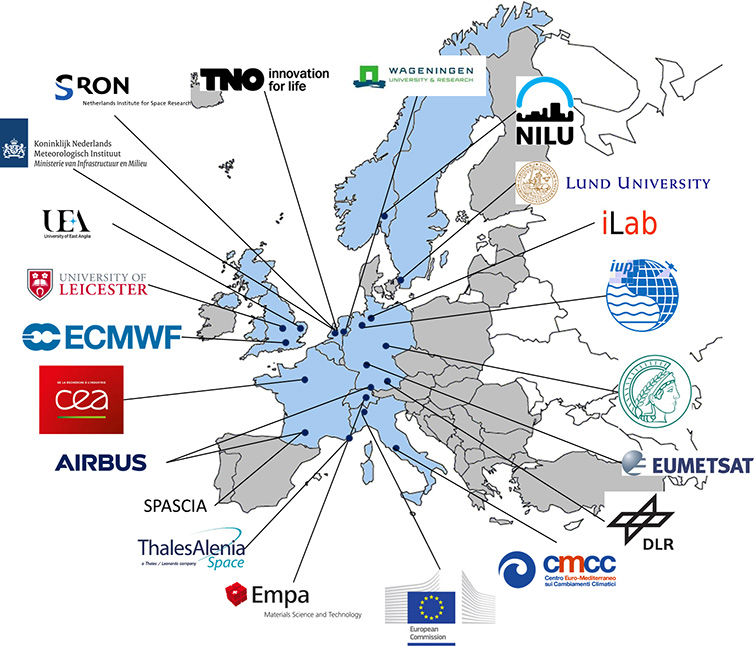

ECMWF is leading a new initiative to explore the development of a European system to monitor human activity related carbon dioxide (CO2) emissions across the world. Such capacity is vital to support Europe’s leading role in worldwide action to address climate change. Starting on 1 October 2017, the CO2 Human Emissions (CHE) project brings together a consortium of 22 European partners and will last for over 3 years.
The initiative will act as a bridge between the European Commission and its CO2 Task Forces, space agencies and related industries, the CO2 science community, and the Copernicus Services. The project aims to bring together relevant expertise to develop the science and to scope out the necessary architecture for a European CO2 monitoring system.
Supporting climate change policy
There is now agreement that climate change represents a very serious threat. Worldwide commitment to tackle the issue culminated in the United Nations Paris Climate Agreement in December 2016, when 195 nations signed-up to limit their greenhouse gas emissions.
However, to enable well-informed decision making for greenhouse gas emission reductions, and to monitor policy effectiveness, a comprehensive global greenhouse gas observing system is required. Monitoring carbon dioxide (CO2) has drawn most attention, due to its dominant role in climate change and the strong human hand in its emissions.
The challenges of developing a CO2 emissions monitoring capacity
In 2015, a European Commission report considered a European capacity for monitoring anthropogenic CO2 emissions and concluded that a comprehensive observing system should be based on a combination of space-borne observations and ground-based monitoring networks.
The observing system must allow us to separate the impact of anthropogenic emissions from the effect of the complex natural carbon cycle, which both affect atmospheric CO2 concentrations.
Observations from satellites, ground-based observation networks and aircraft provide CO2 information at specific times and locations, but alone do not constitute a continental to global monitoring capacity across different time scales. Moreover, these observations mostly measure atmospheric CO2 concentrations, which is an indirect measure of the underlying carbon emissions or uptake. Therefore, the use of an Earth System modelling infrastructure is required to combine Earth observations (ground-based, aircraft and satellite) with detailed CO2 emissions inventory data.
This is a very ambitious target, which is challenged by current limitations in observation availability, as well as in models and model-data fusion techniques. However, those are precisely the key system components needed to enhance our capacity to extract the anthropogenic contribution to rising CO2 concentrations and to enable the impact and effectiveness of policy-driven changes to be monitored.
Combining top-down and bottom-up techniques to study the carbon cycle
Studies of the carbon cycle tend to fall into two categories: 'top-down' and 'bottom-up'.
In 'top-down' or 'inverse' techniques, measurements of CO2 concentration in space and time are used to infer the large-scale uptake and release of CO2 at the surface. However, they have clear difficulties in disentangling sources and sinks at local scales, and even bigger challenges in separating fossil fuel and other human-induced emissions from natural fluxes.
On the other side, 'bottom-up' approaches using process models and inventories can provide spatially heterogeneous information based on our knowledge of emission sources and their evolution over time. They can also incorporate our knowledge of biological processes that drive the exchange of CO2 between the atmosphere and the land and ocean. However, these approaches still have significant errors and uncertainties especially when aggregated to the global scales.
A synergetic solution is therefore to be found through the combination of top-down and bottom-up approaches, by merging the available knowledge from emission inventories and process models with the increasing amount of observational data for the atmosphere and the Earth’s surface.
About the CO2 Human Emissions (CHE) project
CHE, as a Coordination and Support Action, is bringing together European expertise and a consolidated approach to building an operational CO2 emission monitoring capacity. CHE partners are at the forefront of developments in the compilation of emission inventories, the observation of the carbon cycle from ground-based and satellite measurements, the process modelling of the carbon cycle, atmospheric transport modelling, and data assimilation and inversion systems. There will be four main areas of work covering: observations, emission inventories, modelling and inversion systems.
The central questions that CHE will address are:
- What does it take to have a combined bottom-up and top-down estimation system capable of distinguishing the anthropogenic part of the CO2 budget from the natural fluxes?
- How can we make the first steps towards such a system that can use the high spatial and temporal resolution of satellite observations to monitor anthropogenic emissions at the required timescales?
- And what does it take to transform a research system into a fully operational monitoring capacity?
A mature and credible monitoring system for anthropogenic CO2 emissions requires the integration of all available information streams, which is a complex undertaking, as illustrated below.

The figure identifies six main components that form the architecture of a future CO2 anthropogenic emissions monitoring system:
(1) Input data (yellow boxes) based on observations from many different sources
(2) Forward and inverse models (blue boxes) used to relate the observed quantities to CO2 emissions
(3) Model-data fusion methods combine information from the different data streams and models to find an optimal estimate of CO2 emissions and/or associated model parameters.
(4) Target output (i.e. anthropogenic emissions at monthly and country scale with associated uncertainties, and multi-year trends of country-scale emissions with uncertainties)
(5) Verification process
(6) Users
The project consortium
The CHE project consortium comprises 22 partners from 8 European countries (United Kingdom, Netherlands, Sweden, Norway, Germany, France, Switzerland, Italy). The project reach will be further enhanced through inclusive workshops to ensure that this initiative is truly European and relevant capacity is built in all regions of Europe.

The CHE project has received funding from the European Union’s Horizon 2020 research and innovation programme under grant agreement No 776186.
